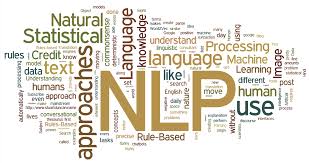Machine learning libraries provide essential tools and functionalities for building, training, and deploying machine learning models. This white paper will explore some of the most popular and influential machine learning libraries, focusing on those specifically designed for natural language processing (NLP) tasks and open-source projects.
A Comprehensive Guide to Essential Machine Learning Libraries: NLP and Open-Source Projects
Introduction
Machine learning libraries provide essential tools and functionalities for building, training, and deploying machine learning models. This white paper will explore some of the most popular and influential machine learning libraries, focusing on those specifically designed for natural language processing (NLP) tasks and open-source projects.
NLP-Specific Libraries
NLTK (Natural Language Toolkit)
-
Key features: A comprehensive toolkit for NLP tasks, including tokenization, stemming, tagging, parsing, and semantic reasoning.
-
Use cases: Text classification, sentiment analysis, named entity recognition, and machine translation.
spaCy
-
Key features: A fast and efficient NLP library, known for its industrial-strength performance and ease of use.
-
Use cases: Information extraction, text classification, and custom NLP pipelines.
Gensim
-
Key features: A library for topic modeling, document similarity, and word embedding.
-
Use cases: Topic modeling, document clustering, and recommendation systems.
Transformers
-
Key features: A state-of-the-art library for sequence-to-sequence modeling, including transformer-based architectures.
-
Use cases: Machine translation, text summarization, question answering, and text generation.
fastText
-
Key features: A fast and efficient text classification and word representation library.
-
Use cases: Text classification, word embeddings, and document similarity.
Hugging Face
-
Key features: A platform for sharing and using machine learning models and datasets, with a focus on NLP and text generation.
-
Use cases: Model training, deployment, and inference, as well as exploring and using pre-trained models.
LangChain
-
Key features: A framework for building end-to-end applications with large language models (LLMs), providing tools for data retrieval, prompt generation, and execution.
-
Use cases: Chatbots, conversational assistants, document summarization, and code generation.
Open-Source Machine Learning Libraries
TensorFlow
-
Key features: A versatile platform for building and training various machine learning models, including deep neural networks.
-
Use cases: Deep learning, natural language processing, computer vision, and reinforcement learning.
PyTorch
-
Key features: Dynamic computational graph, ease of use, strong community support, and integration with other deep learning tools.
-
Use cases: Research, prototyping, and production deployment of deep learning models.
Scikit-learn
-
Key features: Comprehensive collection of algorithms, user-friendly API, and integration with other scientific Python libraries.
-
Use cases: Classification, regression, clustering, dimensionality reduction, and model selection.
Keras
-
Key features: High-level API, easy to use, runs on top of TensorFlow or Theano, and suitable for rapid prototyping.
-
Use cases: Deep learning, especially for building and training neural networks.
XGBoost
-
Key features: Efficient gradient boosting framework, handles large datasets well, and often used in Kaggle competitions.
-
Use cases: Classification, regression, and ranking tasks.
Choosing the Right Library
The choice of library often depends on factors such as the programming language, the type of data, the complexity of the model, and the specific requirements of the project. For NLP tasks, libraries like NLTK, spaCy, Transformers, Hugging Face, and LangChain are excellent starting points. For general-purpose machine learning, TensorFlow, PyTorch, Scikit-learn, and Keras are versatile options.
Conclusion
Machine learning libraries have played a crucial role in democratizing machine learning and making it accessible to a broader audience. By understanding the key features and use cases of these libraries, developers and data scientists can select the most appropriate tools for their projects and accelerate their model development process. Contact ias-research.com for details.
References
NLP-Specific Libraries
-
NLTK: Bird, Steven, Ewan Klein, and Edward Loper. Natural Language Processing with Python. O'Reilly Media, Inc., 2009.
-
spaCy: Honnibal, Matthew, and Ines Montani. spaCy: Industrial-strength Natural Language Processing in Python. 2017.
-
Gensim: Rehůřek, Radim, and Petr Sojka. Software Framework for Topic Modeling with Python. Proceedings of the LREC 2010 Workshop on New Challenges in NLP and Computational Linguistics. 2010.
-
Transformers: Vaswani, Ashish, et al. "Attention is all you need." Advances in Neural Information Processing Systems. 2017.
-
fastText: Bojanowski, Piotr, et al. "Enriching word vectors with subword information." Transactions of the Association for Computational Linguistics. 2017.
-
Hugging Face: https://huggingface.co/
-
LangChain: https://langchain.readthedocs.io/en/latest/
Open-Source Machine Learning Libraries
-
TensorFlow: Abadi, Martín, et al. "TensorFlow: A system for large-scale machine learning." 12th USENIX Symposium on Operating Systems Design and Implementation (OSDI 2016). 2016.
-
PyTorch: Paszke, Adam, et al. "Automatic differentiation in PyTorch." 32nd International Conference on Neural Information Processing Systems (NeurIPS). 2017.
-
Scikit-learn: Pedregosa, Fabian, et al. "Scikit-learn: Machine learning in Python." Journal of Machine Learning Research. 2011.
-
Keras: Chollet, François. Deep Learning with Python. Manning Publications, 2018.
-
XGBoost: Chen, Tianqi, and Carlos Guestrin. "XGBoost: A scalable tree boosting system." Proceedings of the 22nd ACM SIGKDD International Conference on Knowledge Discovery and Data Mining. 2016.



